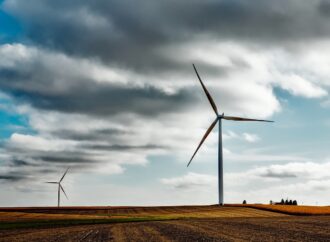Throughout the European Union, local, regional and national authorities are confronted with a myriad of complex challenges in relation to urban, economic and sustainability concerns. Such pressing issues include the need to ensure biodiversity conservation and ecosystem services. The concept of ‘green infrastructure’ (GI) has come to the fore within policy circles in recent years and is seen as a vital cog within the EU’s continued efforts to attain its conservation, climate & energy targets for 2020 and beyond.
We live in an age where menaces to biodiversity, ecosystem services and climate change mitigation and adaptation present a myriad of acute and complex threats to societies across the globe. Cities are now faced with an unprecedented range of complex challenges in terms of urban and economic development along with attempting to address the pressing issues of sustainability, energy security and ensuring a better quality of life for their citizens.
Policy-makers are now tasked with implementing strategic frameworks which encapsulate holistic and innovative concepts in order to establish resilient social-ecological systems and sustainable urban spaces. In a nutshell, the issue at hand is to realise both urban and rural regions which are ecologically and environmentally sustainable by harmonising and balancing our urban development with the natural environment.
The Green Infrastructure Solution
The objective of GI is the establishment of a first-rate network of green (land) and blue (marine) spaces which utilise the natural capital of these areas in order to provide a plethora of environmental and quality-of-life benefits (ecosystem services) for both society and nature. So what sorts of features is a GI network composed of? Well, it can span both natural and urbanised spaces and include a multitude of practices which either use or imitate natural systems in order to better manage storm water runoff within these locations.
Where did all the land go?
Europe has one of the highest proportions of intensive land use of any continent on the global. According to the European Environmental Agency’s latest data released vis-à-vis land use, this figure is now up to 80%. Land reclamation for settlements, infrastructure and production systems has led to major concerns over their negative environmental impacts.
Approximately over 50% of land surfaces are defined as being ‘sealed’ according to the European Commission’s 2011 Roadmap to a resource efficient Europe. In layman’s terms, soil sealing refers to the process whereby an area is permanently covered by impermeable artificial materials. Such measures result in the total loss of environmental soil functions and therefore any associated biodiversity and ecosystem services. By its very nature, land is a finite resource which must be carefully managed and maintained in order to avoid perilous long-term impacts.
EU Green Infrastructure Policy Landscape
In 2013, The European Commission set forth its blueprint for advocating the use of GI within urban centres as a means of augmenting biodiversity and associated ecosystem services. The Communication, entitled ‘Green Infrastructure (GI) – Enhancing Europe’s Natural Capital’ established a framework through which the intensification of GI solutions in urban settings must become a standardised element in spatial planning.
Strategic plans such as the Resource Efficiency Roadmap and the EU’s Biodiversity Strategy to 2020 call for commitments and policy blueprints which can harmonise the diverse range of needs of energy efficiency, protection of biodiversity the sites on the Natura 2000 network with requirements of new urban development patterns.
In conjunction with these efforts, there is a call for a more co-ordinated approach to the implementation of GI, one which instils a Pan-European vision. Creating a transnational GI network in Europe is said to potentially have substantial benefits for increasing the vitality and resilience of ecosystems throughout the EU. Named TEN-G and based upon the existing trans-European networks in grey infrastructure sectors, it would establish a ‘European Green Belt’ initiative spanning many thousands of kilometres, running from the Barents Sea to the Black Sea.
Projects and schemes under the umbrella of TEN-G would represent flagship initiatives which can be used as ‘lighthouse’ examples through which local, regional and national level decision-making planning and processes can be augmented. Member States would be supported in their efforts to develop GI policies within a transnational context via macro-regional strategies such as those supported by the EU’s territorial co-operation programmes.
Casting an eye to the future, policy-making concerned with land-use must set stringent targets to improve sustainability, protect vital ecosystem services and recognise land as a vital resource. Solutions which are scalar in their approach and methodology are important is they are to be effectively implemented.
Investments in our infrastructures shall remain essential, however one must also acknowledge the clear need for individuals and communities to be entrusted with creating their own resilience. This could be achieved through actions such as the promotion of civic ‘bottom-up’ initiatives which encourage local communalities to come together and implement solutions which are tailored for specific localised urban areas.
Genuine adaptability and resilience is no longer limited to individual cities. We live in a modern age whereby transnational actions and co-operation are essential to implementing effective solutions to the many looming environmental challenges we face. Policy concerns are on the correct trajectory and there is reason to be optimistic that the ‘greening’ of Europe shall lead to effective, long-term and viable resilience to adverse climate and environmental shocks.














Leave a Comment
Your email address will not be published. Required fields are marked with *